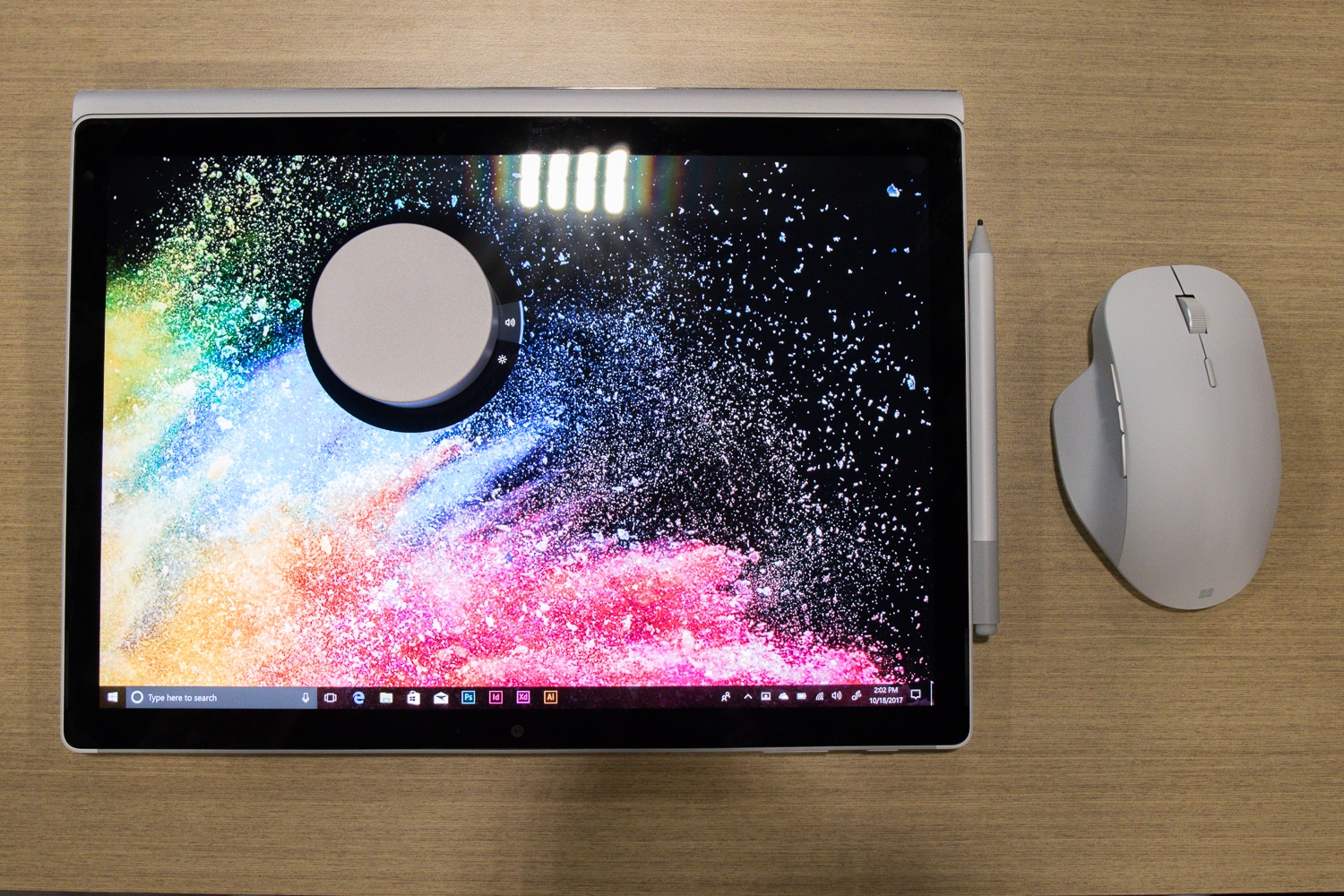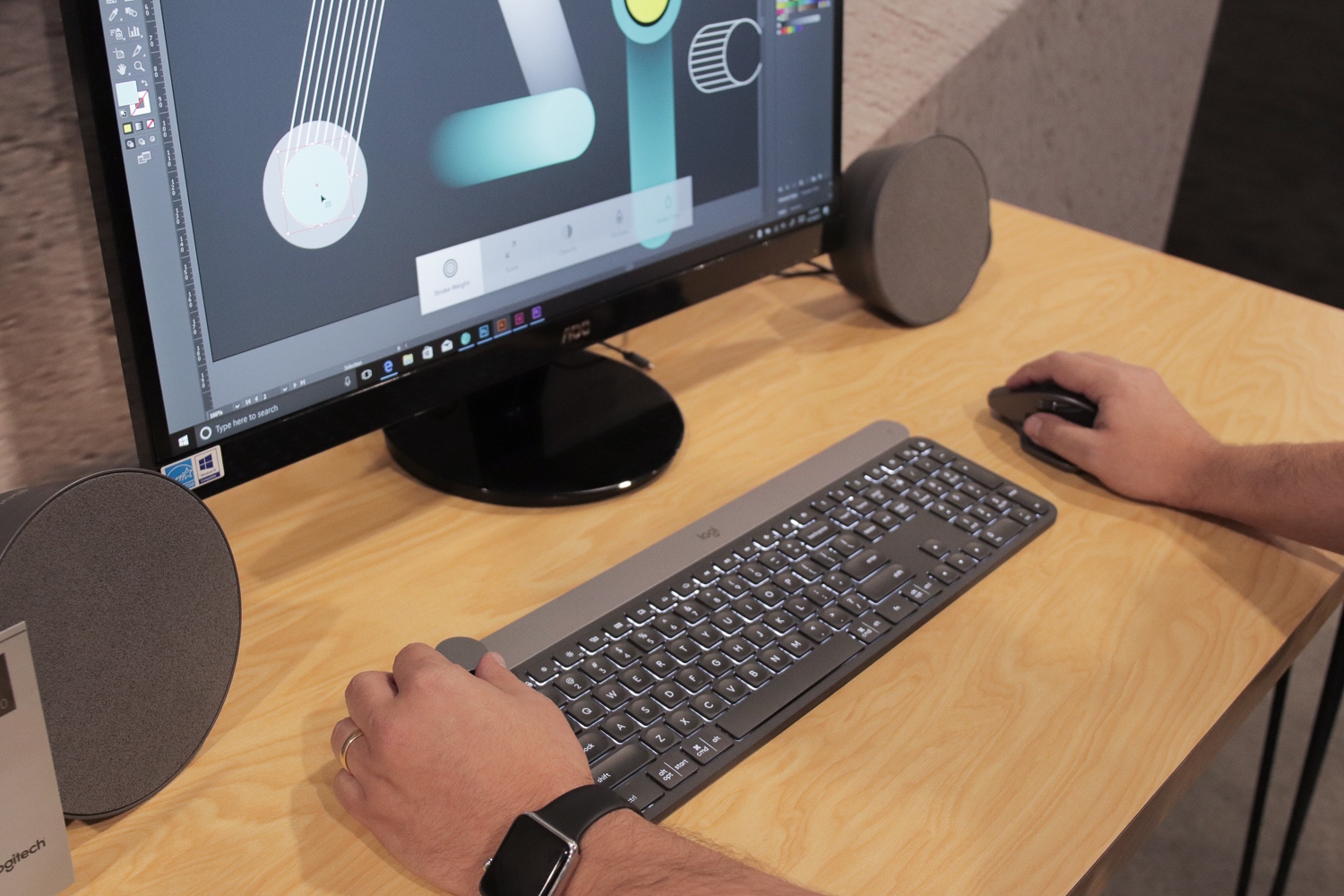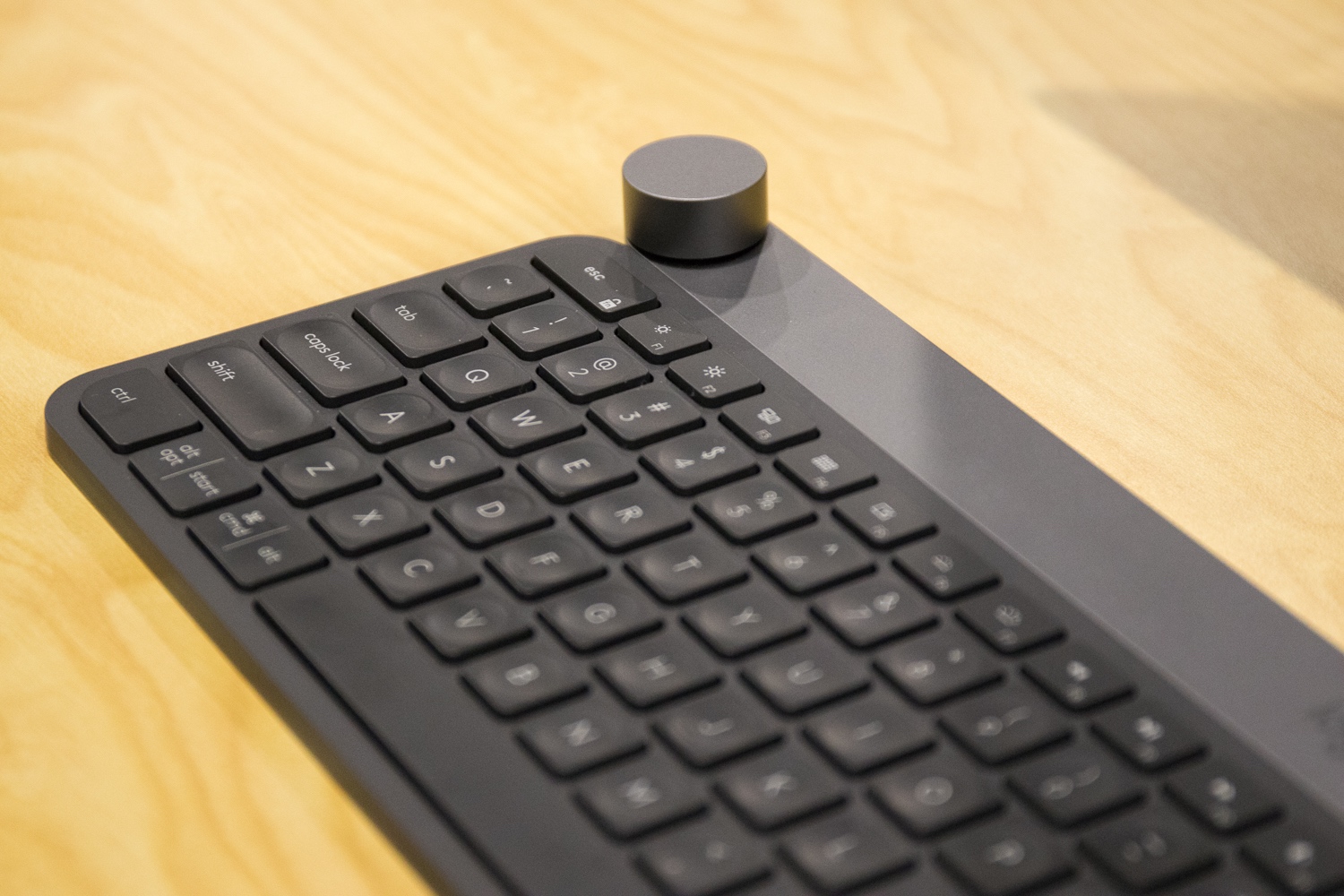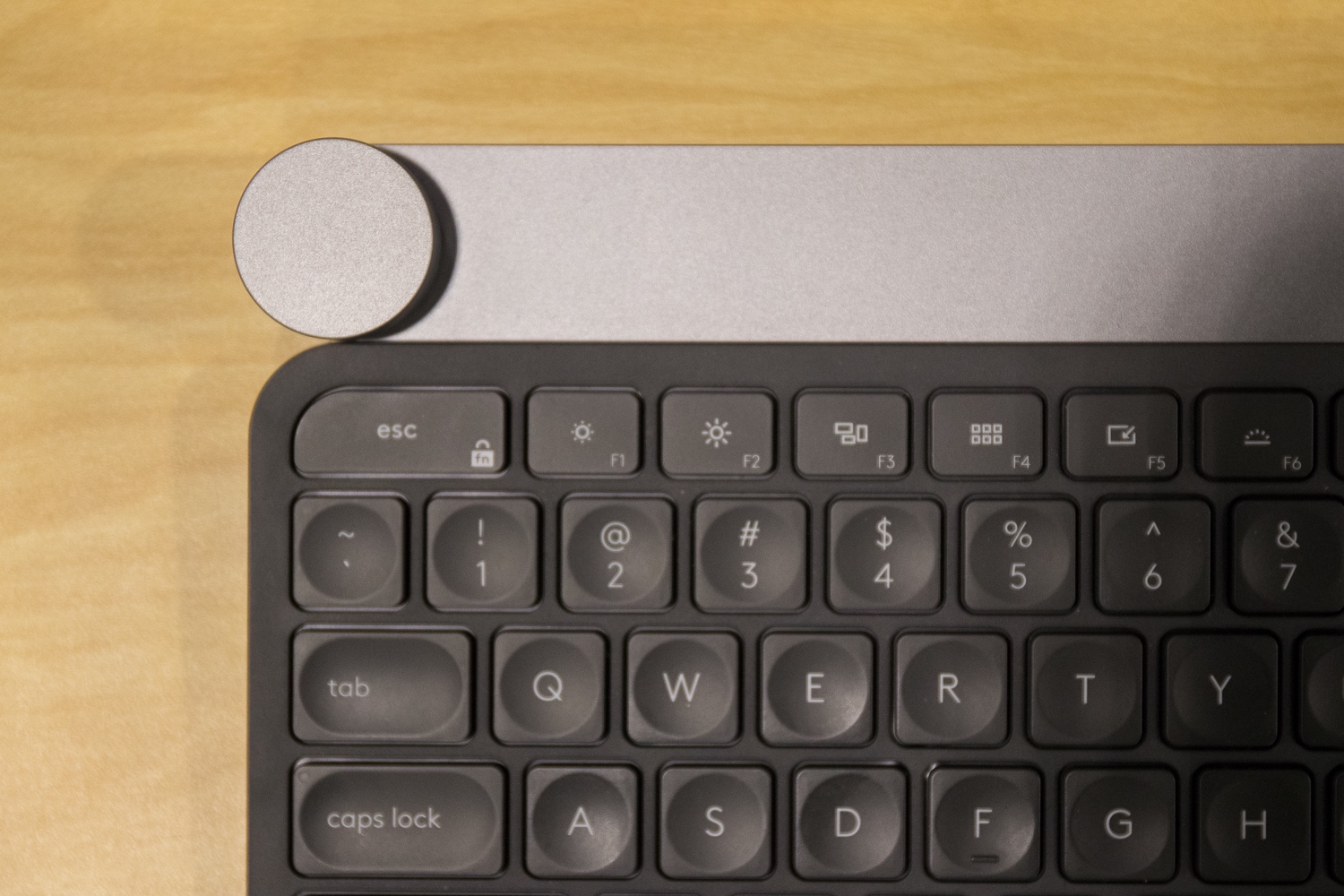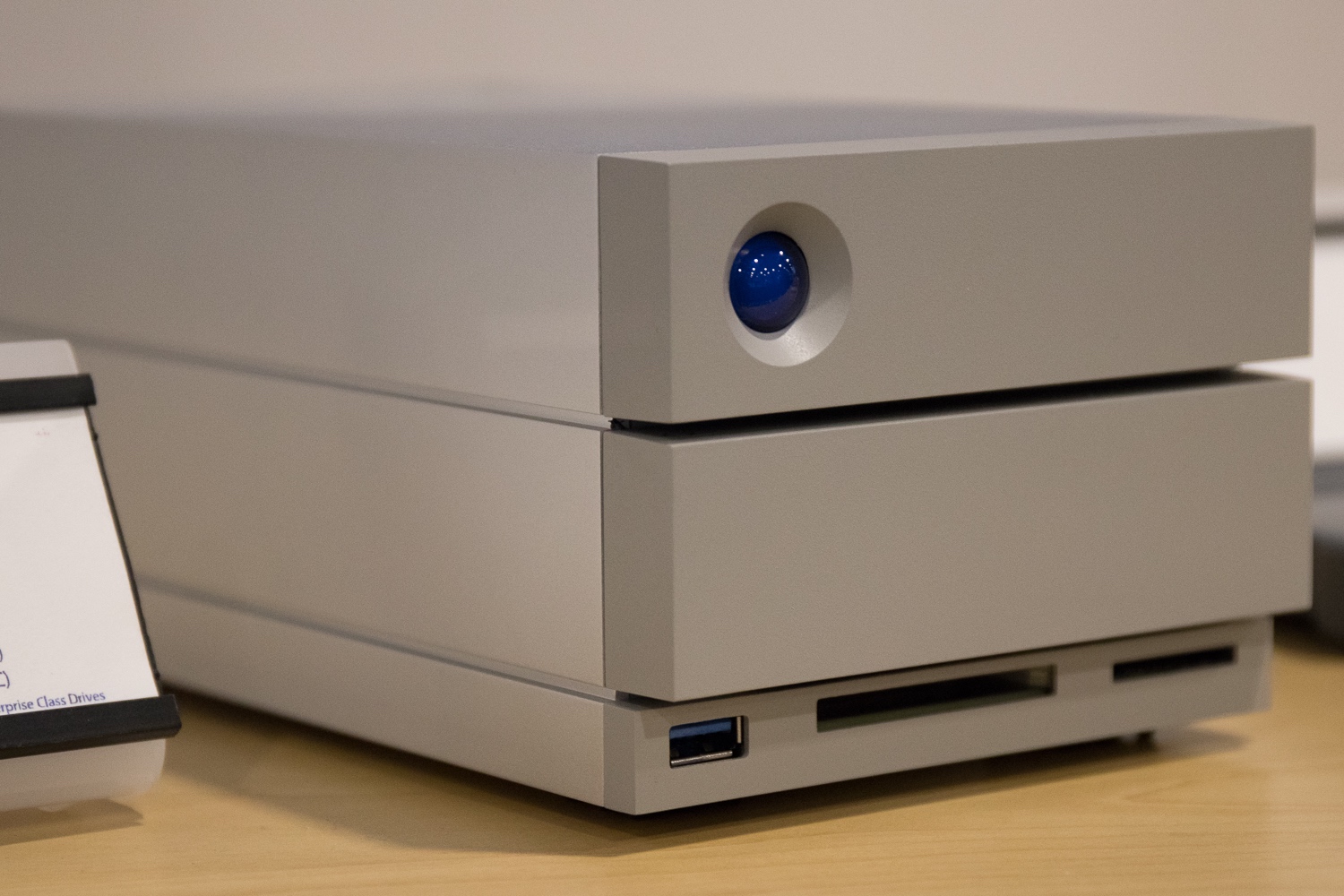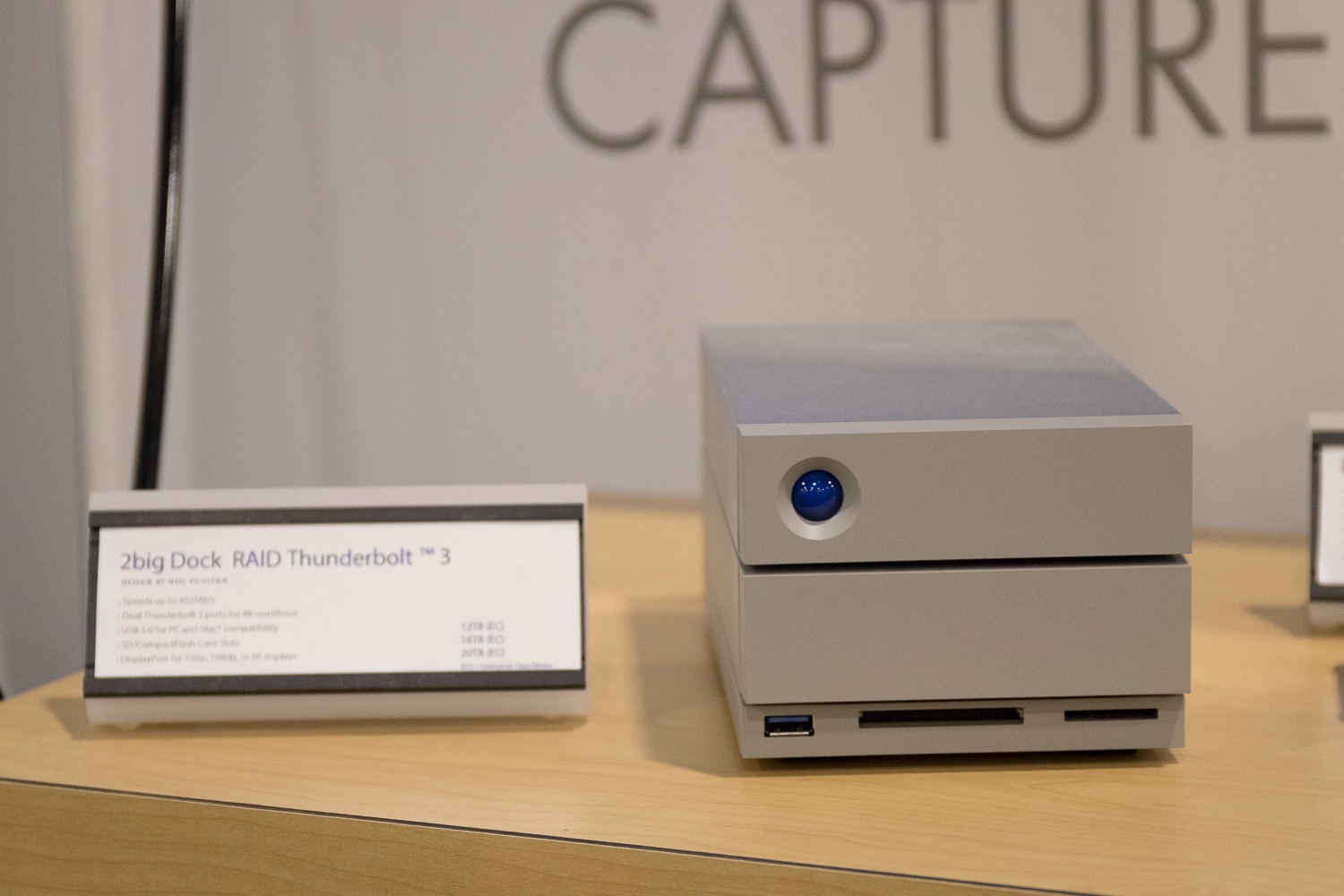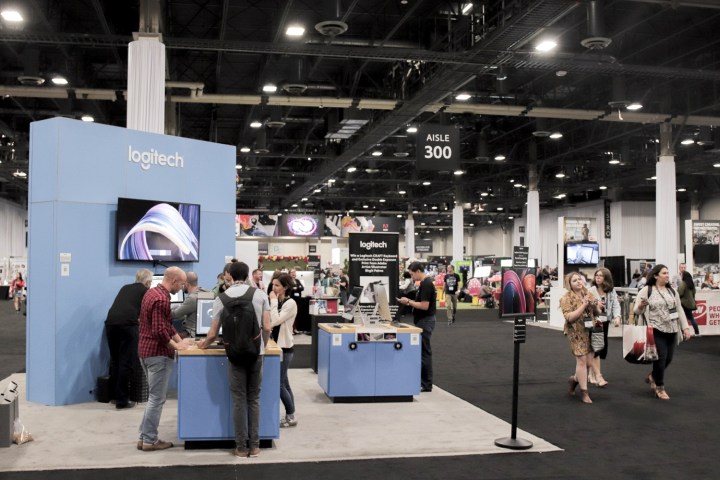
Best software: Adobe Photoshop Lightroom CC

Well, duh. We couldn’t go to MAX and not expect to see great new things from the company that puts it on. Adobe unveiled many new tools and technologies at the show, but the completely redesigned Lightroom CC is the most important for photographers (and, perhaps, the most controversial).
With an emphasis on unifying interfaces across devices, Lightroom CC presents a completely revamped UI with a much sleeker, more modern appearance. compared to the previous version of the program (which lives on, rebranded as Lightroom Classic). In a live demonstration, Adobe showed how it was possible to seamlessly move from a Microsoft Surface Book 2 to an Apple iPad Pro to an iPhone 8, with all your photographs and settings synced across devices thanks to the cloud.
What’s more, every tool and setting that’s available in the desktop version is also available in the mobile versions, and because Adobe now stores your original RAW files in the cloud, you can produce high-quality edits on any device, anywhere. There are still some tools from Classic that have yet to make the move to CC, but knowing Adobe, we expect software updates will bring new features to the program regularly.
Longtime Lightroom users may struggle with the choice to stick with Lightroom Classic or switch to the new Lightroom CC, but fortunately the existing Creative Cloud Photography Plan includes both versions of the app, which should help ease the transition.
Best computer: Microsoft Surface Book 2
With oodles of power and a stunning display, Microsoft’s latest Surface Book is an incredibly capable notebook computer and tablet in one, the perfect mobile editing station for photographers. While we covered all the details in our Surface Book 2 hands-on review, one new tidbit of information at MAX is that Adobe now natively supports the Surface Dial in both Photoshop and Premiere Pro. As the Surface Book 2 also supports on-screen Dial controls, this gives photo and video creatives improved workflows when using the Surface Dial.
While the Surface Book 2 looks identical to the previous version, everything under the hood has changed. That doesn’t just mean more horsepower, but even the internal design of the hinge has changed. The new mechanism can better support the screen in any given position, which helps when using the Surface Dial on-screen, as otherwise you may inadvertently tilt the monitor.
Best input device: Logitech Craft Keyboard
On the surface, the new Logitech Craft Keyboard looks like a standard low-profile wireless keyboard with a copycat Surface Dial bolted on (Logitech calls it the Crown). In practice, it’s much more than that.
Logitech’s driver is context sensitive and includes specific commands for many applications. Press down on the Crown to bring up a list of commands, then tap the side (it’s touch sensitive) to move through the list, and simply rotate the dial to adjust the selected parameter. In Adobe Photoshop, for example, you can adjust brush width and opacity (and much more) while in Google Chrome you can cycle through tabs.
For the sort of infinitely-variable operations like those in Photoshop, the input dial allows frictionless rotation for smooth adjustments, while in applications like Chrome it engages a physical ratchet mechanism to provide satisfying tactile feedback. This may sound like a small detail, but it makes a huge difference in actual use and feels much better than the vibration-based haptic feedback of the Surface Dial.
Best camera: DJI Zenmuse X7

Yup, it’s a drone camera — designed to be used with the DJI Inspire 2 — but the Zenmuse X7 is an impressive imaging device by any standard. With a Super35 sensor that produces 6K RAW footage, it’s the lightest and smallest way to get true cinema quality aerial shots — and, at $2,700, it’s also one of the most affordable.
While we covered the details of the X7 when it launched, what we didn’t appreciate at the time was just how compact the system is. Seeing it in person was very impressive. DJI developed a new lens mount with bespoke lenses housed in carbon fiber, and each of the three primes available could fit in the palm of your hand.
Sadly, DJI wasn’t flying the Inspire 2 at the show — the company’s booth only had sufficient space for flying its smaller drones — so we didn’t get to see the X7 in action. Hopefully we can get our hands on a review model in the near future to see if its performance stacks up to its specs.
Best external storage: LaCie 2Big Dock
When the cloud just isn’t enough, LaCie has you covered. Available in 12, 16, or 20-gigabyte capacities, the company’s latest two-drive RAID offers plenty of storage — but that’s not all. The Thunderbolt 3-equipped external drive also serves as a media dock, with both CompactFlash and SD card slots as well as a standard USB 3 input on the front for connecting thumb drives, cameras, other card readers, or simply charging your phone.
The 2Big Dock houses two enterprise-class Seagate hard drives and offers speeds of up to 450 megabytes per second when in a RAID 0 configuration (which splits files across both drives). It can connect to a computer via
Honorable mentions
With over 12,000 attendees, this was the biggest Adobe MAX show ever. There were numerous companies with cool and interesting products on display, and we simply weren’t able to spend enough time with all of them, but there a couple we should still draw attention to.
The HP ZBook X2 boasts impressive performance in a mobile workstation and uses a matte screen that is excellent for creative work, albeit a bit small for our tastes. The design isn’t what we’d call pretty, with large bezels and sharp angles that make it look like something out of Battlestar Galactica, but it does have plenty of features, including HP Quick Keys that control 18 shortcuts in Adobe apps. It can even power dual 4K displays when docked.

We also were impressed with Dell’s UltraSharp 32 8K monitor. In addition to incredible detail from its 7,680 x 4,320 pixel resolution, it provides excellent color and dynamic range thanks to 10-bit processing. At a little under $4,000, it’s certainly targeting high-end users — but that’s not half bad for all the quality and resolution it gives you.


